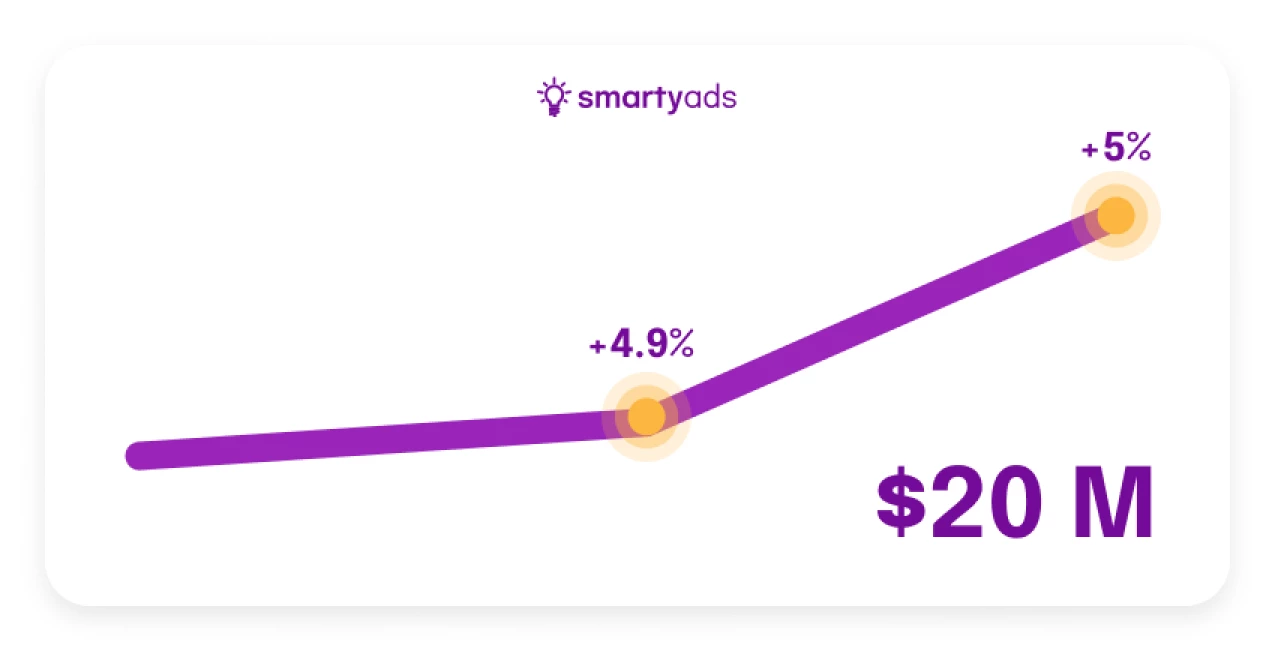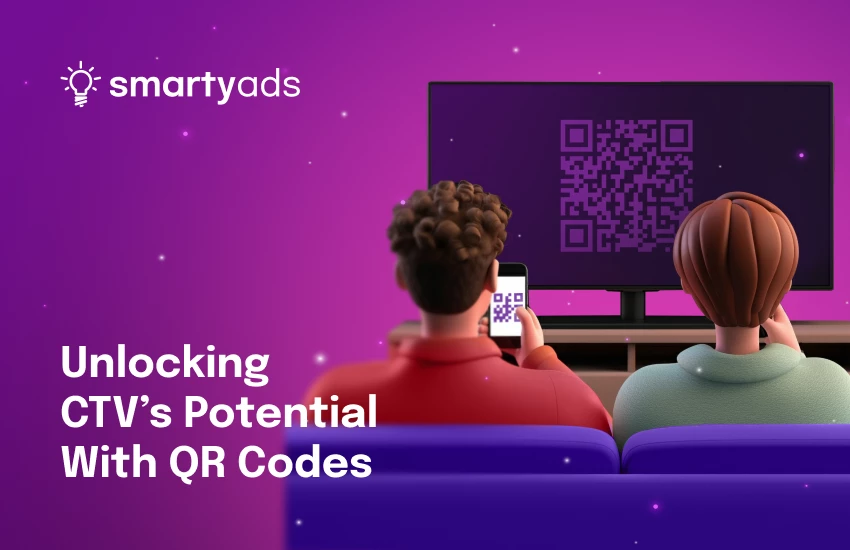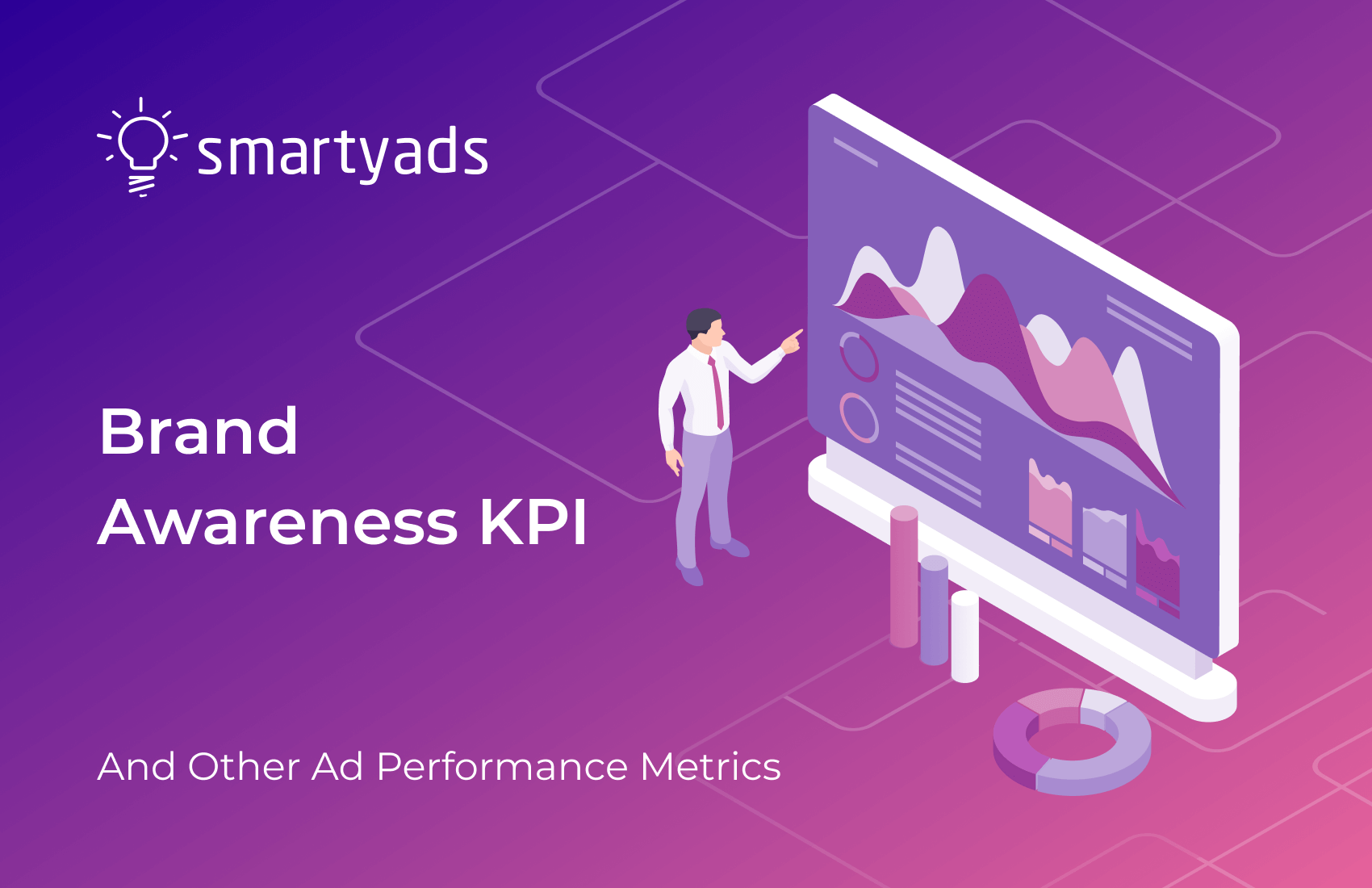TV has always been about big images and storytelling. People watched the ads, remembered the brand, but the actual action happened later — in stores or online. Now the game is changing. QR codes are turning CTV from a branding channel into a direct bridge to action.
One quick scan and the viewer lands on a product page. Another tap and the item is already in their Walmart cart, or they’ve unlocked a discount coupon. It’s the moment where brand awareness transforms into measurable results — and it’s finally happening right on the big screen.

Why QR codes work on CTV
Viewers don’t just sit in front of the TV anymore — they scroll, chat, and shop on their phones at the same time. Research shows that 83% of Americans use a mobile device while watching TV. That’s why QR codes feel so natural on CTV: they meet people exactly where their attention already is.
Adding a scannable code makes the ad actionable. Instead of just watching, viewers can instantly respond — scan to learn more, claim a discount, or even add products straight to their online cart. During Super Bowl LVI, Coinbase proved the point, when a bouncing QR code sent 20 million people to its landing page in just one minute.
It’s not only about online sales. JCPenney used QR codes to drive shoppers into physical stores, unlocking discounts and offers that pushed real-world foot traffic. The campaign delivered more than $20 million in revenue and lifted both brand consideration (+4.9%) and purchase intent (+5%).

And when Mondelez teamed up with Walmart for a CTV campaign, QR codes helped viewers shop directly from the ad. The result? 10x higher conversions than CTV benchmarks and a 12% increase in new buyers.
These numbers show one simple truth: QR codes bridge the gap between the big screen and real consumer actions.
Smart moves: QR best practices for advertisers
Making QR codes work on CTV isn’t about placing a random square on the screen. To turn scans into results, the details matter — from the offer itself to how long the code stays visible.
.webp)
1. Strong call-to-action
A QR code on its own is just a square. What makes it powerful is the promise behind it. If viewers don’t know what they’ll get, they won’t bother reaching for their phone. That’s why the offer must be crystal clear and worth the effort.
Think urgency and value: “Scan now for 20% off — today only.” Or exclusivity: “Unlock early access before anyone else.” Even curiosity works if it’s framed right: “See the full story here.”
The CTA should be short, direct, and visible both on-screen and in the voiceover. Don’t bury it in small print — let it shine right next to the code. The clearer the benefit, the faster people act.
And remember: a strong CTA doesn’t just drive scans, it sets up the entire journey — from TV screen to phone screen to checkout. Without it, the QR code is just wallpaper.
2. Placement & timing
Show it early. Most scans happen in the first 10 seconds, so bring the QR on-screen right away with the CTA. Keep it up long enough. Aim for spots 15s or longer and let the code stay, not blink.
Park it in a clean corner (bottom-right or bottom-left). Avoid subtitles, logos, and fast-motion areas. Add a light halo or card if the background is busy. Reinforce with VO or super: “Scan to save,” “Scan now.” That tiny nudge lifts scans.
3. Design that fits the creative
Make the code feel native, not pasted on. Use brand colors, but keep high contrast (dark code on light background works best). Size it for the couch. Think big and stable — no tiny squares in a busy scene.
Keep a quiet zone (clear padding) around the code so cameras can lock on.
If the background moves, place the code on a subtle card or halo. No flicker, no jitter. Add a micro-CTA right next to it: “Scan for 20% off” / “Learn more.” Arrows and gentle motion cues help.
If you add a logo inside the code, use higher error-correction so it still scans. Test across iOS and Android default cameras from 2–3 meters. If it’s slow or fussy, fix contrast/size first.
4. Analytics & optimization
Use unique, trackable URLs with clean UTM tags (channel=CTV, show, network, creative, placement). Deep-link to the app when possible; set smart fallbacks to web or app store.
Measure more than scans: scan→visit rate, add-to-cart, purchase, time on page. Bucket scan timing (0–10s, 10–30s, 30s+) to see when people actually act.
A/B test the CTA line, size, corner placement, and card style. Small tweaks move numbers. Watch fatigue. Rotate offers and frequency so the same audience doesn’t tune it out.
Close the loop: tie scans to business outcomes in your weekly readouts, not just engagement. Keep it privacy-safe and aggregated — you need patterns, not personal data.

From attention to action: the proof behind QR on CTV
When CTV meets QR, attention turns into action. Studies show 76% of consumers would scan a relevant QR on TV, and adding one boosts attention by ~12%. In 2024, Innovid reported 3× growth in QR usage, +18% CTV impressions, and engagement nearly tripled — clear signs viewers are ready to interact, not just watch.
Real campaigns back it up. Coinbase’s bouncing code during Super Bowl LVI drove 20M visits in one minute. JCPenney used scannable offers to push in-store traffic, generating $20M+ in revenue, a 2.93% conversion rate, and lifts in both consideration (+4.9%) and purchase intent (+5%). Mondelez + Walmart made CTV instantly shoppable, hitting 10× higher conversions vs. CTV benchmarks and a 12% rise in new buyers.
Behavior is on our side. 83% of Americans use a phone while watching TV, so the QR code removes friction at the exact moment attention peaks. One scan. One tap. Basket, coupon, app — done.
This is how we close the CTV value gap. Today, U.S. adults spend ~17.9% of their video time on CTV, but advertisers direct only ~7.4% of budgets there. With measurable scans, carts, and sales, QR-powered CTV starts earning performance dollars, not just brand budgets.
Bottom line: QR codes make the big screen accountable. They lift attention, compress the path to purchase, and give marketers the metrics they need to scale. For the first time, TV doesn’t just build awareness — it delivers proof.
CTV Interactive by SmartyAds: where attention meets conversion
CTV is no longer “watch and hope.” With QR, it’s watch and act as interactive TV advertising. One scan. One tap. Cart, coupon, app — done. That’s how we turn brand attention into measurable outcomes.
With CTV Interactive by SmartyAds, you get the building blocks to make it happen:
- QR-enabled pre- and mid-roll video: 15–120s, non-skippable options, clear on-screen CTA.
- Branded QR frames/cards: high contrast, custom colors, logo lockups, micro-copy right by the code.
- Smart landing flows: deep links to app or web, clean UTM structure, quick load, fewer taps.
- Targeting that matters: geo down to ZIP, dayparting, audience segments that fit your goal.
- Measurement that counts: scans, visits, add-to-cart, purchases — rolled up into simple reports.
- Creative testing: A/B different CTAs, size, corner placement, and dwell time to lift scan rate.hing
If you want TV that moves people — not next week, but now — this is the way. Let’s make your next CTV spot shoppable, scannable, and accountable.
Ready to make your CTV ads actionable? Explore CTV Interactive by SmartyAds and see how it works for your brand.





